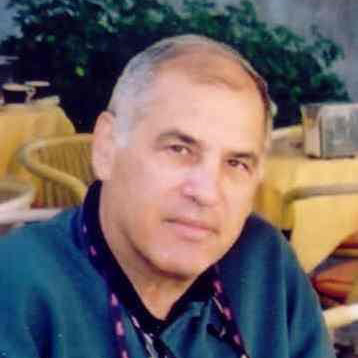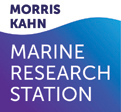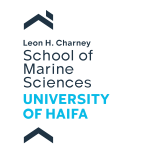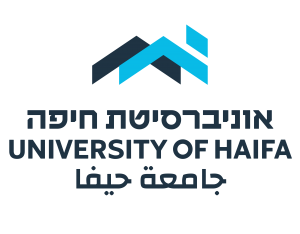
Prof. Muki Shpigel
1985: Ph.D. in Marine Biology (Tel Aviv University).
1985-2017: Senior Scientist at Israel Oceanographic and Limnological Research, National Center for Mariculture, Eilat (Grade A+).
1989-1990: Postdoctoral position at the Virginia Institute of Marine Science (VIMS) in Prof. Roger Mann’s department. Research subject: bivalve bioenergetics.
1998-1999: Sabbatical leaves, at N.O.A.A, Milford Laboratory, Milford, CT, USA.
2010-to date: Adjunct Professor, Ben Gurion University of the Negev.
2017-to date: Visiting scientist at the Interuniversity Institute for Marine Sciences, Eilat.
2018-to date: Principal Research Associate, Morris Kahn Marine Research Station, Haifa University.
Research interests:
- Sustainable aquaculture
- Research and development of Integrated Multi-Trophic Aquaculture (IMTA) systems.
- Mariculture (biology and technology) of bivalves, sea urchins, abalone and seaweed.
- Physiology of bivalves (oysters, clams), abalone and sea urchins.
- Use of bivalves, Artemia, seaweed and constructed wetland with halophytes as biofilters of mariculture effluents.
- Using seaweeds and halophyte plants as feed.
Publications:
(a) Authored books
- Shpigel, M. (1994). Red Sea Fish. The Society for the Protection of Nature Pub. 183 pp. (translated into 5 languages).
(b) Chapters in collective volumes.
- Shpigel, M. (1983). The Serranidae. In: Encyclopedia of Plant and Animal Life in Israel, Vol. 1, Society for the Protection of Nature, Israel Defense Ministry Publ., pp. 165-167 (in Hebrew).
- Lawrence, J.M., McBride, S.C., Plank, L.R. and Shpigel, M. (2003). Ammonia tolerance of the sea urchins Lytechinus variegates Arbacia punctulata, Strongylocentrotus franciscanus, and Paracentrotus lividus. In: Echinoderm Research 2001. Feral & David (Eds.), pp. 233-236. Swets&Zeitlinger, Lisse.
- Shpigel, M. (2005). The use bivalves as biofilters and valuable product in land based aquaculture systems-review. In: The Comparative Roles of Suspension-Feeders in Ecosystems. Dame, R. and Olenin, S. (Eds). Kluwer Academic Pub., Dordrecht, The Netherlands, 400 pages.
- Neori, A. and M. Shpigel (2006). Algae: key for sustainable mariculture. In: Seaweed Resources of the World (Critchley, AT, M. Ohno, DB Largo, Eds.), ETI Bioinformatics, University of Amsterdam (a book and a DVD disk).
- Neori, A. and M. Shpigel (2006). An integrated system for farming fish, seaweed and abalone (an invited contribution). In: CAB International Aquaculture Compendium. Online at www.cabicompendium.org/ac. Wallingford, UK.
- Shpigel, M. and Neori, A. (2007) Evaluation of macroalgae, microalgae, and bivalves as biofilters in sustainable land-based mariculture systems. In: Ecological and Genetic Implications of Aquaculture Activities Theresa M. Bert, (Ed.). Klewer Publications, Dordrecht, the Netherlands.
- Shpigel, M (2009). Coral nutrition. In; working with aquarium corals. Leewis, R, Wijgerde, T., Laterveer, M and Osing, R (Eds.) The European Association for Zoos and Aquaria.
- Shpigel, M. (2013). Mariculture systems, Integrated Land-Based. In: Sustainable Food Production. Springer Science, N.Y. PP. 111-1120.
- Shpigel, M. (2015). Land-Based Integrated Multi-Trophic Mariculture System. I. In: Encyclopedia of Sustainability Science and Technology. Springer Science, N.Y.
- 10. Shpigel, M. (2013). Environmentally friendly mariculture. In: Glory of the sea: Stability and Change in the Aquatic Systems of Israel. N.Stambler, Lotan T., Berman Frank, I. (Eds.). The Israeli Association of Aquatic Sciences. 457pp (In Hebrew).
- 11. Neori, A., Shpigel, M., Guttman, L., Israel, A. (submitted). Chapter 5. The Development of Integrated Multi -Trophic Aquaculture (IMTA) in Israel. In: Greening the Blue Revolution: The Turquoise Revolution of Integrated Multi-Trophic Aquaculture (IMTA) (Chopin, T., Neori, A., Robinson, S. and Troell, M., Eds.). Springer Publishers, Dordrecht.
(c) Refereed articles/letters in scientific journals
- Shpigel, M. (1982). Niche overlap among two species of coral dwelling fishes of the genus Dascyllus (Pomacentridae). Biol. Fish. 7(1): 65-68.
- Shpigel, M. and Fishelson, L. (1983). Ecology and sociobiology of coexistence in two species of Dascyllus (Pomacentridae, Teleostei). Bull. Inst. Oceanogr. Fish. 9: 207-224.
- Diamant, A and Shpigel, M. (1985). Interspecific associations of groupers Serranidae, Teleostei) with octopus and moray eels in the Northern Red Sea. Env. Biol. Fish. 13: 153-159.
- Shpigel, M. and Fishelson, L. (1986). Behavior and physiology of two species of Dascyllus (Pomacentridae, Teleostei). Env. Biol.Fish. 17:253-261.
- Shpigel, M., Coon, S.L. and Kleinot, P. (1989). Growth and survival of cultchless spat of Ostrea edulis Linnaeus, 1750 produced using epinephrine and shell-chips. J. Shellfish. Res. 8(2): 355-357.
- Shpigel, M. (1989). Gametogenesis of the European Flat oyster (Ostrea edulis) and Pacific oyster (Crassostrea gigas) in warm water in Israel. Aquaculture 80(3-4):343-349.
- Shpigel, M. and Fishelson, L. (1989). Food habits and feeding behavior of Red Sea groupers Cephalopholis (Serranidae, Teleostei) Env. Biol. Fish 24:67-73.
- Shpigel, M. and Fishelson, L. (1989). Habitat partitioning between species of the genus Cephalopholis (Pisces, Serranidae) across the fringing reef of the Gulf of Aqaba (Red Sea). Mar. Ecol. Prog. Ser. 58(1-2):17-22.
- Shpigel, M. and Fridman, R. (1990). Propagation of the Manila clam Tapes semidecussatus in the effluent of fish aquaculture ponds in Eilat, Israel. Aquaculture 90(2): 113-122.
- Gordin, H., Krom, M., Neori, A., Popper, D., Porter, C. and Shpigel, M. (1990). Intensive integrated seawater fish ponds: Fish growth and water quality. In: Research in Modern Aquaculture. H. Rosenthal and S. Sarig Aquaculture Society, Special Publication No.11. pp. 45-64.
- Shpigel, M. and Fishelson, L. (1991). Territoriality and associated behavior in three species of the genus Cephalopholis (Pisces: Serranidae) in the Gulf of Aqaba, Red-Sea. J. Fish Biol. 38(6): 887-896.
- Shpigel, M. and Fishelson, L. (1991). Experimental removal of piscivorous groupers of the genus Cephalopholis (Serranidae) from coral habitats in the Gulf of Aqaba. Environ. Biol. Fish. 31(2): 131-138.
- Shpigel, M. and Blaylock, R.A. (1991). The Pacific oyster Crassostrea gigas, as a biological filter for marine fish aquaculture pond. Aquaculture 92(2-3):187-197.
- Sami, S., Shpigel, M. and Faisal, M. (1991). Comparison between the host defense mechanisms of diploid and triploid oysters Crassostrea gigas: effect of thermal stress on hemocyte surface Concanavalin A-binding sites. Zeitschrift fur Angewandte Zoologie 78(1): 69-78.
- Shpigel, M., Barber, B.J. and Mann, R. (1992). Effects of elevated temperature on growth, gametogenesis, physiology and biochemical composition in diploid and triploid Pacific oysters, Crassostrea gigas Thunberg.
- Exp. Mar. Biol. Ecol. 161(1): 15-25.
- Shpigel, M., Lee, J., Soohoo, B., Fridman, R. and Gordin, H. (1993).
Use of effluent water from fish-ponds as a food source for the pacific oyster Crassostrea gigas Thunberg. Aquaculture Res. 24(4): 529-543.
- Shpigel, M., Neori, A., Popper, D.M. and Gordin, H. (1993). A proposed model for an “environmentally clean” land-based culture of fish, bivalves and seaweeds. Aquaculture 117: 115-128.
- Allen, S.K., Shpigel, M., Utting, S. and Spencer, B. (1994). Incidental production of tetraploid Manila clams Tapes philippinarum (Adams and Reeve). Aquaculture 128(1-2): 13-19.
- Shpigel, M. and Spencer, B. (1996). Performance of diploid and triploid Manila clams (Tapes philippinarum, Adams and Reeve) at various levels of tidal exposure in the UK and in water from fishponds at Elat, Israel. Aquaculture 141(3-4): 159-171.
- Shpigel, M. and Neori, A. (1996). The integrated culture of seaweed, abalone, fish and clams in modular intensive land-based systems: I. Proportion of size and projected revenues. Aquacultural Engineering 15(5): 313-326.
- 21. Shpigel, M., Marshall, A., Lupatsch, , Mercer, J.P. and Neori, A. (1996).
Acclimation and propagation of the abalone Haliotis tuberculata in land-based culture system in Israel. J. World Aquaculture Soc. 27(4): 435-442.
- Shpigel, M., Neori, A. and Marshall, A. (1996). The suitability of several introduced species of abalone (Gastropoda: Haliotidae) for land‑based culture with pond grown seaweed in Israel. Israeli Journal of Aquaculture/Bamidgeh 48(4), pp. 192-200.
- Shpigel, M., Gasith, A. and Kimmel, E. (1997). A biomechanical filter for treating fish-pond effluents. Aquaculture 152(1-4):103-117.
- Neori, A., Ragg, N.L.C. and Shpigel, M. (1998). The integrated culture of seaweed, abalone, fish and clams in intensive land-based systems: II. Performance and nitrogen partitioning within integrated abalone (Haliotis tuberculata) and macroalgae (Ulva lactuca and Gracilaria conferta) culture system.
Aquacultural Engineering 17(4):215-239.
- Shpigel, M., Ragg, N. C. Lupatsch, I. and Neori, A. (1999). Protein content determines the nutritional value of the seaweed Ulva lactuca for the abalone Haliotis tuberculata and Haliotis discus hannai. J. Shellfish Res. 18 (1): 227-233.
- Neori, A. and Shpigel, M. (1999). Using algae to treat effluents and feed invertebrates in sustainable integrated mariculture. World Aquaculture 30(2): 46-51.
- Shpigel, M., Ragg, N. C. Lupatsch, I. and Neori, A. (1999). Protein content determines the nutritional value of the seaweed Ulva lactuca for the abalone Haliotis tuberculata and Haliotis discus hannai. J. Shellfish Res. 18 (1): 227-233.
- Neori, A, Shpigel, M. and Ben-Ezra, D. (2000). The integrated culture of seaweed, abalone, fish and clams in modular intensive land‑based systems: III. Fish, seaweed and abalone. Aquaculture 186(3-4): 279-291.
- McBride, S.C., Rotem, E., Ben-Ezra, D., and Shpigel, M. (2001). Seasonal energetics of Haliotis fulgens (Philippi) and Haliotis tuberculata (L.). J. Shellfish Res. 20(2): 659-665.
- Boarder, S.J. and Shpigel, M. (2001). Comparative performances of juvenile Haliotis roei fed on enriched Ulva rigida and various artificial diets. J. Shellfish Res. 20(2): 653-659.
- Shpigel, M., Neori, A. and Zmora, O. (2002). Sustainable land-based mariculture in arid environment. The Sea Urchin: From Basic Biology to Aquaculture. Sea Urchin Aquaculture, advanced workshop. Torregrande, Sardinia, Italy. pp. 139-144
- Lee, J.J., Shpigel, M., Freeman, S., McLeod, S., Bowen, S., Pearson, M. and Szostek, S. (2003). Physiological ecology and possible control strategy of a toxic marine Dinoflagellate, Amphidinium sp., from the benthos of a mariculture pond. Aquaculture 217: 351-371.
- Schuenhoff, A., Shpigel, M. Lupatsch. I., Ashkenazi, A., Msuya, F.E. and Neori, A. (2003). A Semi-Commercial, Integrated System for the Culture of Fish and Seaweed. Aquaculture 221(1-4): 167-181.
- Neori, A., Msuya, F.E., Shauli, L., Schuenhoff, A., Lupatsch, I. and Shpigel, M. (2003). A novel three-state Ulva lactuca biofilter design for integrated mariculture: fast and efficient ammonia uptake rates and high yields of protein-rich biomass. J. Applied Phycology 15:543-553.
- Lee, J., Shpigel, M., Olea, R., Pochon, X, Cevasco, M., and Pawlowski, J. (2004). A toxic marine dinoflagellate, Amphidinium eilatiensis, sp. nov., from the benthos of a mariculture sedimentation pond in Eilat, Israel. J. Euk. Microbiology 50 🙁 6) 439-448.
- Neori, A., Chopin, T., Troell, M., Buschmann, A.H., Kraemer, G.P., Halling, C., Shpigel, M. and Yarish, C. (2004). Integrated aquaculture: rationale, evolution and state of the art emphasizing seaweed biofiltration in modern mariculture. Aquaculture 231: 361-391
- Shpigel, M., McBride, S.C., Marciano, S. and Lupatsch, I. (2004). The effect of photoperiod and temperature on the reproduction of European sea urchin, Paracentrotus lividus. Aquaculture 232:343-355.
- Gordon, N., Shpigel, M., Harpaz, S., Lee, J.J. and Neori, A. (2004). The settlement of abalone (Haliotis discus hannai) larvae on culture layers of different diatoms. J. Shellfish Res. 23(2): 561-568.
- Lee, J., Rodriguez, D., Zmora, O., Neori, A, Symons, A. and Shpigel, M. (2004). Transition from earthen sedimentation ponds in integrated mariculture systems to ones lined with PVC, what needs to be done. J. Applied Phycology 16: 341-353.
- Hadas, E., Shpigel, M., and Ilan, M. (2005). Sea ranching of the marine sponge Negombata magnifica (Demospongiae, Latrunculiidae) as a first step for latrunculin-B production. Aquaculture 244:159-169.
- Shpigel, M. McBride, S.C., Marciano, S., Ron, S., and Ben-Amotz, A. (2005). Improving gonad colour and somatic index in the European sea urchin Paracentrotus lividus. Aquaculture 245:101-109.
- Schlosser, S., Lupatsch I., Lawrence, J., Lawrence, A., Shpigel, M. (2005). Protein and energy digestibility and gonad development of the European sea urchin Paracentrotus lividus (Lamarck) fed algal and prepared diets during spring and fall. Aquaculture Research 36 (10): 972-982.
- Hadas, E., Marie, E., M. Shpigel and Ilan, M. (2006). Virus predation by sponges is a new nutrient flow pathway in the coral reef food web. Limnology & Oceanography 51(3):1548-1550.
- Gordon, N, Neori, A., Harpaz, S., Lee, J.J., and Shpigel, M. (2006). Effect of diatom diets on growth and survival of the abalone Haliotis discus hannai postlarvae. Aquaculture 252:225-233.
- Zmora, O., and M. Shpigel (2006). Intensive mass production of Artemia in a recirculated system. Aquaculture 255:488-494.
- Shpigel, M. S. Schlosser, A. Ben-Amotz, A.L. Lawrence, J. M. Lawrence (2006). Effect of dietary carotenoid on the gut and the gonad of the sea urchin Paracentrotus lividus. Aquaculture 261; 1269-1280.
- Hadas, E., M. Shpigel, M. Ilan (2008). Oxygen consumption by coral reef sponge. The Journal of Experimental Biology: 211:2185-2190.
- Stuart B. and M. Shpigel (2009). Evaluating the economic potential of horizontally integrated land-based marine aquaculture. Aquaculture: 294:43-51.
- Hadas, E., M. Shpigel, M. Ilan (2009). Particulate organic matter as a food source. The Journal of Experimental Biology 212(22): 3643-3650.
- Wegi W. A., M. Shpigel and M. Sagi (2010). Molybdenum application and its effects on the molybdenum-enzymes NR and XDH in sea water irrigated Salicornia. Sciatic Horticul 126: 395-401.
- Ventura, Y., Wegi W., Myrzabayeva, M., Alikulov, Z., Shpigel, M. Samocha, T and M. Sagi (2011). Effect of seawater concentration on the productivity and nutritional value of annual Salicornia and perennial Sarcocornia halophytes as leafy vegetables crops. Sciatic Horticul: 128, 189-196.
- Bergman, O., Haber, M. Mayzel, B. Anderson, M.A. Shpigel, M. Hill, R. and Ilan, M (2011). Marine based cultivation of Diacarnus sponges and the bacterial community composition of wild and maricultured sponges and their larvae. Marine Biotechnology 13 (6) 1169-1182.
- Ventura, Y., Wegi, A. Shpigel. M., Samocha, T.M., Klim, B., Cohen, S., Santos, R., Sagi, M. (2011). Effects of day length on flowering and yield production of Salicornia and Sarcocornia species. Sciatic Horticul Sciatic Horticul 130, 510-516.
- Bergman, O., M. Mayzel, B. Anderson, M.A. Shpigel, M. Hill, R. and Ilan, M (2011). Examination of marine-based cultivation of three demo sponges for acquiring bioactive marine natural products. Marine Drugs 2011, 9(11), 2201-2219.
- Osinga, R., Schutter, M., Wijgerde, T., Rinkevich, B., Shafir, S., Shpigel M., Marco Luna, G., Danovaro, R., Bongiorni, L., Deutsch, A., Kuecken, M., Hiddinga, B., Janse, M., McLeod, A., Gili, G., Lavorano, S., Henard, S., Barthelemy, D., Westhoff, G., Baylina, N., Santos, E., Weissenbacher, A., Kuba, M., Jones, R., Leewis, R., Petersen, D., and Laterveer, M .(2012). The CORALZOO project: a synopsis of four years of public aquarium science, J. Marine Biol. Ass.UK. 92(4): 753-768.
- Shpigel, M., Ben-Ezra, D., aShauli, L., Sagi, M., Ventura, Y., Samocha, T. and Lee, J.J. (2013). Constructed Wetland with Salicornia as a Biofilter for Mariculture Effluents. Aquaculture 412: 412-413.
- Vidavsky, N, Addadi, S, Mahamid, J, Shimoni, E, Ben-Ezra, D, Shpigel, M, Weiner, S and Addadi, L (2014). Initial stages of calcium uptake and mineral deposition in sea urchin embryos. PNAS doi: 10.1073/pnas. 1312833110).
- Ben Ari, T., Neori, A., Ben-Ezra, D., Shauli, L., Odnietzov, V. Shpigel, M. (2014). Management of Ulva lactuca as a biofilter of mariculture effluents in IMTA system. Aquaculture 434:493-498.
- Samocha, T. M., Fricker, J., Ali, A. M., Shpigel, M., & Neori, A. (2015). Growth and nutrient uptake of the macroalga Gracilaria tikvahiae cultured with the shrimp Litopenaeus vannamei in an Integrated Multi-Trophic Aquaculture (IMTA) system. Aquaculture, 446, 263-271.
- Yeruham, E., Rilov, G., Shpigel, M, Abelson, A. (2015). Collapse of the echinoid Paracentrotus lividus populations in the Eastern Mediterranean – result of climate change? Scientific Reports 5:134-179.
- Shpigel, M. Shauli, l., Odintsov, V Ben-Ezra, D. (2016). Nutrient recovery and sludge management in Seabream and Grey Mullet in Multi-Trophic Aquaculture (IMTA). Aquaculture 64: 316-322.
- Vidavsky, N. Addadi, S., Scherer, A., Ben-Ezra. D., Shpigel, M., Addadi, L., Weiner, S. (2016). Calcium transport into the cells of the sea urchin larva in relation to spicule formation. PNAS 113 (45):12637-12642. doi: 10.1073/pnas.1612017113.
- Levy, A., Milstein, A., Neori, A., Harpaz, S. Shpigel, M., Guttman, L., (2017). Marine periphyton biofilters in mariculture effluents: nutrient uptake and biomass development. Aquaculture 473:513-520.
- Neori, A., Shpigel, M., Israel, A. (2017). The Development of Polyculture and Integrated Multi -Trophic Aquaculture (IMTA) in Israel: A Review, Israel Bamidgeh, IJA-69.2017.1385.
- 66. Shpigel, M., Shauli, L., Odintsov V., Harpaz, S., Ben-Ezra, D., (2017). Ulva lactuca from an Integrated Multi-Tropic Aquaculture (IMTA) biofilter system as a protein supplement in gilthead seabream (Sparus aurata) diet. Aquaculture, 481; 112-118. https://doi.org/10.1016/j.aquaculture.2018.06.038
- Qiu, X., Neori, A., Kim, J., Yarish, C., Shpigel, M., Guttman, L., Ben-Ezra. D., Odintsov, V., Davis, A., (2017). Evaluation of green seaweed Ulva sp. as a replacement of fish meal in plant-based practical diets for Pacific white shrimp, Litopenaeus vannamei. Journal of Applied Phycology. 30 (2), 1305-1316. doi 10.1007/s10811-017-1278-0.
- Qiu, X., Neori, A., Kim, J., Yarish, C., Shpigel, M., Guttman, L., Ben-Ezra. D., Odintsov, V., Davis, A., (2017). Green seaweed Ulva sp. as an alternative ingredient in plant-based practical diets for Pacific white shrimp, Litopenaeus vannamei. Journal of Applied Phycology. 30 (2), 1317-1333. https: //doi 10.1007/s10811-017-1288-y
- Milstein, A., Levy, A Neori, A., Harpaz, S. Shpigel, M., Guttman, L. (2017). Water quality, ecological processes and management procedures in a Periphyton biofiltration system in mariculture: a statistical analysis. Aquaculture Research. 49 (4), 1491-1503. doi 10.1111/are.13604
- Shpigel, M., Shauli, L., Odintsov V., Harpaz, S., Ben-Ezra, D., (2018). Ulva lactuca biofilter from a land-based Integrated Multi Trophic Aquaculture (IMTA) system as a sole food source for the tropical sea urchin Tripneustes gratilla elatensis. Aquaculture, 496, 221-231. https://doi.org/10.1016/j.aquaculture.2018.06.038
- Shpigel, M., Shauli, L., Odintsov, V, Ben-Ezra, D. Neori, A., Guttman, L. (2018). The sea urchin, Paracentrotus lividus, in an Integrated Multi-Trophic Aquaculture (IMTA) system with fish (Sparus aurata) and seaweed (Ulva lactuca): nitrogen partitioning and proportional configurations. Aquaculture, 490:260-269. https://doi.org/10.1016/j.aquaculture.2018.02.05
- Guttman, L., Boxman, S.E., Barkan, R., Neori, A., Shpigel, M. (2018). Combination of Ulva and periphyton as biofilter for both ammonia and nitrate in fishpond effluents Algal Research, 34 (235-243). https://doi.org/10.1016/j.algal.2018.08.002
- Yeruham, E., Abelson, A., Rilov, G. , Ben Ezra, D., Shpigel, M. (2019). Energy budget of cultured Paracentrotus lividus under different temperatures. Aquaculture, 501:7-13. https://doi.org/10.1016/j.aquaculture.2018.11.006
- Shpigel, M., Guttman, L., Ben-Ezra, D., Yu, H., Chen, S. (2019). Is Ulva sp. able to be an efficient biofilter for mariculture effluents?. J. of Applied Phycology. (4), 2449-2459. https://doi.org/10.1007/s10811-019-1748-7.
- Gutner-Hoch, E., Martins, R., Maia, F., Oliveira, T., Shpigel, M., Weis, M., Tedim, J., Benayahu, Y. (2019). Toxicity of engineered micro- and nanomaterials with antifouling properties to the brine shrimp Artemia salina and embryonic stages of the sea urchin Paracentrotus lividus. ENVPOL. 251, 530-537. https://doi.org/10.1016/j.envpol.2019.05.03
- Neori, A., Guttman, L., Israel, A., Shpigel, M. (2019). Israeli developed models of marine Integrated Multi Trophic Aquaculture (IMTA). J. of Coastal Resaerch, 86:11-20. https:/doi.org/10.2112/SI86-003.
- Guttman, L., Neori, A, Boxman, S.E, Shahar, B, Barkan, R, Main, K., and Shpigel, M. (2019). An integrated Ulva-periphyton biofilter for mariculture effluents: nitrogen uptake kinetics. Algal research:42 101586. https://doi.org/10.1016/j.algal.2019.101586
- Yeruham E., Shpigel M., Abelson A., Rilov G.O. (2019). Ocean warming and bio- invaders erode the fitness of a key herbivore at its warm distributional edge Ecology, https://doi.org/10.1002/ecy.2925
- Shahar, B., Shpigel, M., Barkan, R., Masasa, M, Neori, A., Chernov, H., Salomon, E., Kiflawi, M. and Guttman, L. (2020). Changes in metabolism, growth and nutrient uptake of Ulva fasciata (Chlorophyta) in response to nitrogen source. Alagl Research, 46;101781. https://doi.org/10.1016/j.algal.2019.101781
- Neori, A., Bronfman, Y., van Rijn, J. Guttman, L., Krupnik, N., Shpigel, M., Samocha, T.M., Allen D., Qiu, K., Abelin, P., Israel, A., (2020). The suitability of Ulva fasciata, Ulva compressa and Hypnea musciformis for producti on in an outdoors film/spray/drip cultivation system, with respect to biomass yield and protein content Journal of Applied Phycology. 46;101781. https://doi.org/10.1016/j.algal.2019.101781.
- Shpigel, M., and Erez, J. (2020). Effect of diets and light regimes on calcification and somatic growth of the sea urchin Tripneustes gratilla elatensis. Aquaculture, 529, 735547 https://doi.org/10.1016/j
- Masasa, M, Kushmaro, A, Kramarsky‑Winter, E, Shpigel, M, Barkan, R, Golberg, A, Kribus, A, Shashar, N and Guttman, L. (2021). Mono-specifc algal diets shape microbial networking in the gut of the sea urchin Tripneustes gratilla elatensis. Animal Microbiome (3) 79. http://doi.org/10.1186/s42523-021-00140-1
- Custódio, L, Rodrigues, Perei, L. Castañeda-Loaiza, G, Fernandes, V, Standing, D. . Neori, A. Shpigel, M and Sagi, M (2021). A Review on Sarcocornia Species: Ethnopharmacology, Nutritional Properties, Phytochemistry, Biological activities and Propagation
- Sisay, T.A., Nurbekova, Z., Oshanova, D., Dubey, K., Khatri, K., Mudgal, V., Mudgal, A., Neori, A., Shpigel, M., Srivastava, K., Custódio, K., Standing, D., and Sagi, M. (2022) Effect of Salinity and Nitrogen Fertilization Levels on Growth Parameters of Sarcocornia fruticosa, Salicornia brachiata,and Arthrocnemum macrostachyum. Agronomy 12, 1749. https://doi.org/10.3390/agronomy12081749.
- Alvaro, I and Shpigel, M. (2023). Photosynthetic CO 2 uptake by Ulva (Chlorophyta) as a potential contribution to global warming containment”. Journal of Applied Phycology.(in press).
(d) Proceedings of symposia
- Gordin, H., Krom, M., Neori, A., Popper, D., Porter, C. and Shpigel, M. (1990). Intensive integrated seawater fish ponds: Fish growth and water quality. In: Research in Modern Aquaculture. H. Rosenthal and S. Sarig Aquaculture Society, Special Publication No.11. pp. 45-64.
- Shpigel, M., Neori, A., and H. Gordin (1991). Oyster and clam production in the outflow water of marine fishpond in Israel. EAS (European Aquaculture Society) special publication No. 14, p. 295.
- Shpigel, M., Neori, A., Popper, D.M and H. Gordin (1992). A proposed model for “clean” land-based polyculture of fish, bivalves and seaweed. S-Israel Workshop on Mariculture and the Environment. Elat, Israel. pp 43-55.
- Jenkins, G.I., Boarder, S.J., Partridge, G.J. and Shpigel, M. (2000).
Proceedings of the National Workshop on Wastewater Treatment and Integrated Aquaculture, SARDI, pp. 137-141.
- Neori, A., Shpigel, M., Zmora, O., (2001). Sustainable land-based mariculture in arid environments. Proceedings of the Symposium on Co-Management of Resources off the South-Western coast of Africa. Volume: pp 124-131.
- Shpigel, M., Neori, A.,. and Zmora, O. (2002). Sustainable land-based mariculture in arid environment. The Sea Urchin: From Basic Biology to Aquaculture. Sea Urchin Aquaculture, advanced workshop, 20 Nov.- 1 Dec. 2000, Torregrande, Sardinia, Italy, pp. 139-144
- Schuenhoff, A., Shpigel, M., Lupatsch, I., Msuya, F.E., Ashkenazi, A. and Neori, A. (2003). A semi-commercial, recirculating integrated system for the culture of fish and seaweed. European Aquaculture Society Special Publication. No. 33, pp. 308-309.
- Hussenot, J.M.E. and Shpigel, M. (2003). Marine land-based integrated aquaculture systems for European countries and the EU innovation project “Genesis”. 2003 Beyond Monoculture: European Aquaculture Society Special Publication No. 33, pp. 31-36.
- Shpigel, M. and Neori, A. (2003). Integrated systems: Different systems for different regions. 2003 Beyond Monoculture: European Aquaculture Society Special Publication No. 33, pp. 69-72.
- Neori A. and Shpigel, M. (2004). Algae: a key for sustainable integrated mariculture. Beyond Monoculture: European Aquaculture Society Special Publication No. 33, pp. 52-57.
- Shpigel, M (2007). Bivalves as Biofilter: Efficient, Profitable, and Tasty as Well!. Aquaculture Technologies for Invertebrates Proceedings of the Thirty-sixth U.S.-Japan Aquaculture Panel Symposium Durham, New Hampshire October 29-30, 2007
And Milford, Connecticut November 2, 2007.pp31-32.
- 12. Browdy, C.L., Hulata, G., Liu, Z., Allan, G.L., Sommerville, C., Passos de Andrade, T., Pereira, R., Yarish, C., Shpigel, M., Chopin, T., Robinson, S., Avnimelech, Y. & Lovatelli, A. (2012). Novel and emerging technologies: can they contribute to improving aquaculture sustainability? In R.P. Subasinghe, J.R. Arthur, D.M. Bartley, S.S. De Silva, M. Halwart, N. Hishamunda, C.V. Mohan & P. Sorgeloos, eds. Farming the Waters for People and Food. Proceedings of the Global Conference on Aquaculture 2010, Phuket, Thailand. 22–25 September 2010. pp. 149–191. FAO, Rome and NACA, Bangkok.
- Shpigel, M. (2012). Bivalves as Biofilter: Efficient, Profitable, and Tasty as Well! Aquaculture Technologies for Invertebrates Proceedings of the Thirty-sixth U.S.-Japan Aquaculture Panel Symposium Durham, New Hampshire October 29-30, 2007 and Milford, Connecticut November 2, 2007.
(e) Unreformed professional articles and publications
- Shpigel, M. (1977). Communication among the Damselfish. Land and and Nature 19: 56-58.
- Shpigel, M. (1988). With the fish. Yam Magazine 1:38.
- Shpigel, M. (1988). The Cleaner Wrasse. Yam Magazine. 3:32-33.
- Shpigel, M. (1988). Coexistence in the coral reef. Yam Magazine: 6:57.
- Shpigel, M (1992). They shoot at fish. Yam Magazine 25:36.
- Shpigel, M. (1994). We have only one coral reef. Tzlila, Israeli Underwater Federation Magazine 3: 59.
- Shpigel, M. (1995). Fish, shellfish and seaweed, environmentally friendly integrated system in Israel. Yam Magazine 47: 53-56.
- Shpigel, M (1995). Sinai Peninsula, 25 years later. Heretz Vateva 39: 47.
- Shpigel, M (2001). Mariculture. Teva Hadvarim 69:74-90.



